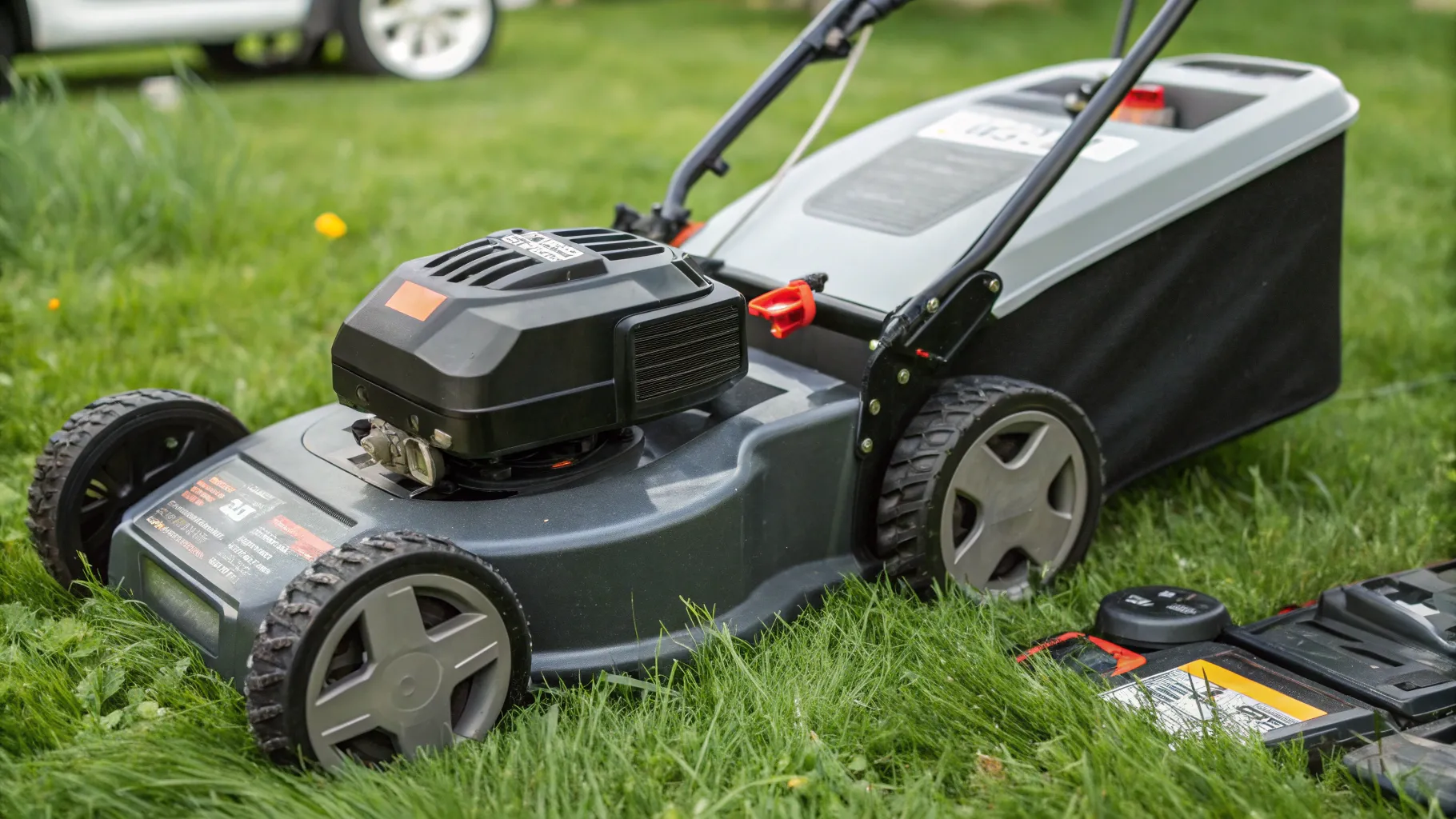Permanent Outdoor Lights Compared: GOVEE vs. LUMARY vs. EUFY
Permanent outdoor LED puck lights are transforming how homeowners approach seasonal lighting, architectural accenting, and year-round curb appeal.

This comparison examines eight flagship battery-powered lawn mowers from major brands and breaks down the crucial considerations buyers should weigh before purchasing. The analysis covers budget ranges, lawn size guidance, height-adjustment systems, deck materials, noise, storage, and the standout models in value, performance, and overall usability. Data points include motor equivalencies, blade tip speed, torque figures, runtime estimates, and measured decibel levels, all used to provide practical, purchase-ready recommendations. The goal is to help readers select the right battery mower for their yard while explaining why certain models outperform others in specific categories.
Battery-powered residential mowers typically start around $350 for a kit that includes a battery and charger, and prices can climb above $1,100 for premium units. The market generally falls into three tiers: entry-level ($300–$499), mid-range ($500–$699), and premium ($700+). During testing, the sample set spanned prices from about $550 to $1,200, with the highest price coming from a premium model. Shoppers are likely to find solid sale opportunities—occasionally dipping to about $300 for quality options—so timing and seasonal deals can significantly affect value.
Choosing the right mower depends heavily on lawn conditions and size. Thicker or taller grass species require more torque and a more robust motor; conversely, smaller yards and fine turf can be handled by lower-power units. Battery slot count matters: single-battery mowers are common and suitable for small lots, while two- or four-battery platforms provide the runtime needed for larger properties. Estimated yard coverage in this analysis comes from a combined assessment of battery power rating, real-world runtime, and blade diameter; changing battery sizes or adding an extra battery will alter those estimates.
Height-adjustment systems vary from a single lever that shifts the whole deck to multi-point adjustments that change each wheel independently. Single-point levers are more convenient for quick changes, while four-point systems are typically chosen on heavier-duty decks for greater durability. In the tested sample, most mowers used a single-point adjustment; however, one premium model used separate front and rear adjustments, and another offered individual wheel adjustments. Cutting-height ranges generally span roughly 1 to 4 inches, with increment steps typically between 0.5 and 1 inch; the Toro model had the fewest adjustment positions (five), and the Ryobi offered the most (ten).
Deck construction influences longevity, weight, and handling. Steel remains the most common deck material for the mowers tested, providing a durable and familiar feel. One brand opted for high-grade plastic, which reduces weight and resists rust but may not deliver the same durability as metal. A premium option used an aluminum deck, offering a strong and corrosion-resistant middle ground that looks and feels more refined. Build quality considerations should include deck material, handle ergonomics, and control layout—features that affect the daily mowing experience as much as raw cutting performance.
Electric mowers are substantially quieter than gas counterparts, but there are still measurable differences between battery models. Decibel testing in an open field showed sound levels ranging from about 80 dB at the quietest to 87 dB at the loudest, with one model leading the pack at 80 dB and another close behind at 81 dB. Even at the louder end, these machines remain less likely to cause hearing damage over typical mowing sessions compared with gas engines, though ear protection is still recommended for extended use. Almost all tested units provide foldable handles and vertical storage capability—some with one-point fold activation and others with two-point systems—making compact storage a standard expectation.
Three models stood out across different shopper priorities: the best value pick for budget-conscious buyers, the highest-performance model for demanding lawns, and the best all-around mower for balanced performance, ergonomics, and price. Each selection was based on measurable outputs (torque, blade tip speed, runtime) as well as user-facing features like handle design, drive controls, and maneuverability. The summaries below highlight why each model earns its spot and what buyers should consider before purchase.
The Greenworks 21-inch self-propelled mower delivers an impressive value proposition for roughly $550 (often less on sale). Its brushless motor performs in the approximate class of a 160cc gas engine and produces blade tip speeds near 1,700 feet per minute. A razor-cut stacked blade system improves cut quality, and the machine remains comparatively lightweight for its power bracket, aiding maneuverability. The control layout and an easier-to-fold handle make it simple to use, and a single kit battery will typically cover yards up to about a half acre under normal conditions, making it an excellent pick for buyers seeking performance on a budget.
The EGO LM2206SP is among the most powerful walk-behind battery mowers tested and feels closer to a commercial unit than a typical residential model. It produces around 11.1 foot-pounds of torque—outpacing a competing model that measures about 10 foot-pounds—and its six-elect cut blade system provides flexibility for bagging, mulching, or prioritizing runtime. Ergonomic features include a three-position handle height and an easy-to-adjust thumbwheel drive speed control, which helps tailor the mowing experience on the fly. The trade-offs are weight and a larger deck, which can reduce agility in tight turns, and a higher price point that may put it out of reach for budget-minded homeowners.
The Echo 56V DLM2100SP earned the best overall recommendation by balancing cutting power, runtime, ergonomics, and price. With performance in the neighborhood of a 160cc gas engine, it provides confident cutting and reasonable runtime without the heft of some premium competitors. The unit is lighter and easier to maneuver, features a comfortable handle design, and positions all controls for easy reach and adjustment during a mowing session. For yards larger than a quarter acre, a two-battery kit is strongly recommended to achieve runtime enough for roughly two-thirds of an acre under light conditions or about a half acre during peak growing season. At a retail-level price near $650, it offers an attractive balance of features and affordability.
Recommendations are based on a combination of objective testing and usability factors: measured torque and blade tip speed, real-world runtime with included batteries, deck size and blade configuration, sound level readings, and user-facing design such as handle comfort and drive control. Price and value were weighed alongside performance; a lower-cost mower that delivers reliable cutting and a straightforward user experience can outperform a more expensive model that offers marginal gains in peak power. Storage convenience, deck material, and adjustability were also factored in to reflect the mowing experience over multiple seasons.
Yes. Battery mowers produce significantly lower average decibel levels than gas engines. Measured levels among tested models ranged roughly from 80 dB to 87 dB, offering a much quieter experience compared with typical gas-powered units. Quieter operation makes battery mowers more suitable for early-morning or late-evening use in residential neighborhoods.
Coverage depends on battery capacity and grass conditions, but a two-battery kit is often recommended for yards around half an acre, particularly during peak growing season. Single-battery setups may handle smaller lots (under a quarter acre) or light, infrequent cutting, whereas multiple batteries extend runtime and allow consistent power across larger properties.
For most homeowners, modern battery mowers can replace gas units thanks to comparable cutting performance, lower noise, simpler maintenance, and near-zero local emissions. Heavy commercial workloads or extremely large properties may still favor commercial gas or heavy-duty electric platforms, but residential users will find battery options capable of handling typical lawns.
Aluminum decks offer a favorable compromise: lighter than steel, more durable than plastic, and resistant to corrosion. Steel decks are robust and cost-effective but can be heavier and subject to rust, while high-grade plastic decks reduce weight and resist corrosion but may not match metal in long-term durability for heavy use. Choice depends on priorities such as weight, durability, and budget.
Single-point adjustments are convenient for quick changes and are sufficient for the majority of homeowners. Multi-point or individual wheel adjustments offer finer control and potentially greater durability for heavier decks. Most users will find single-point systems adequate unless specific terrain or frequent height changes are required.
Battery-powered lawn mowers now cover a broad spectrum of homeowner needs, from budget-focused models that deliver strong value to premium units offering near-commercial performance. Key purchase drivers include budget tier, property size, grass type, and desired runtime—factors that determine whether a single- or multi-battery platform is the right choice. For those seeking the best balance between price and everyday experience, mid-range models that combine solid cut quality, comfortable controls, and manageable weight offer the most compelling ownership experience. Buyers should prioritize runtime estimates and power ratings that match their yard size and mowing habits to ensure a satisfying long-term result.
Access all your saved properties, searches, notes and more.
Access all your saved properties, searches, notes and more.
Enter your email address and we will send you a link to change your password.


Your trusted MLS search companion